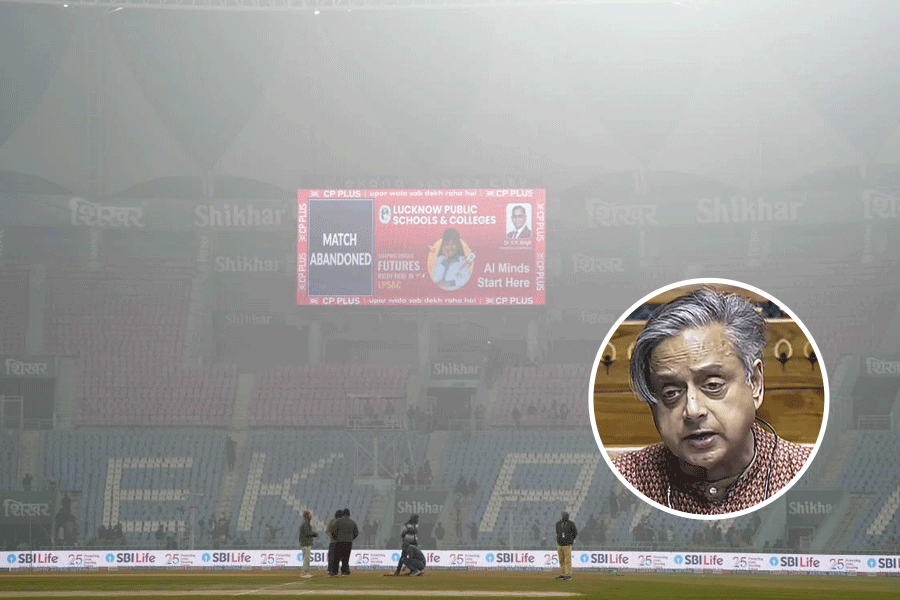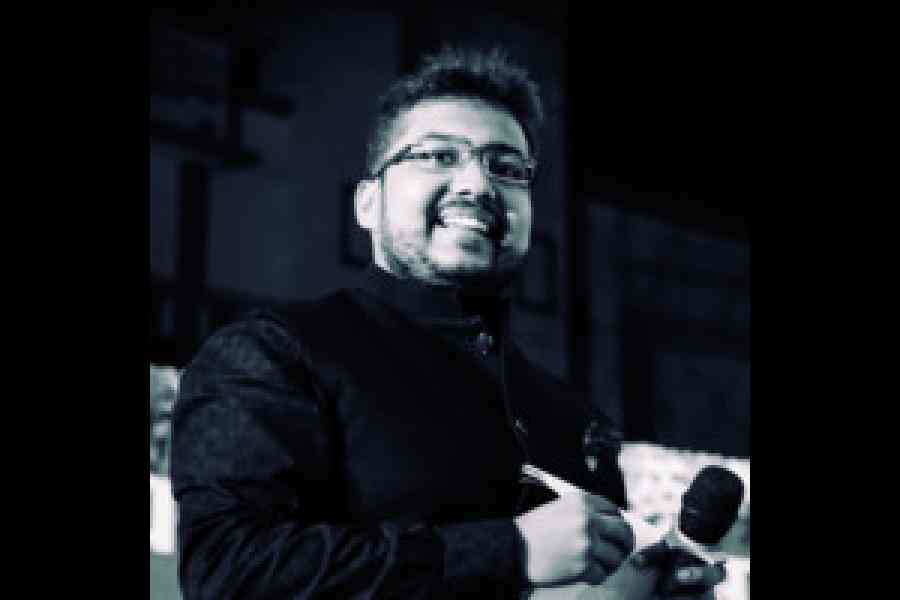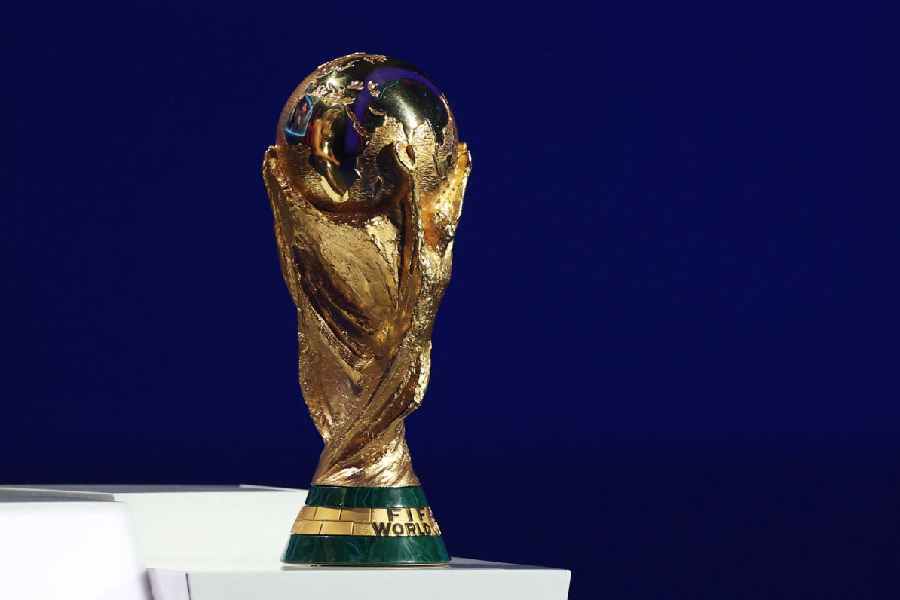 |
Thiruvananthapuram, Feb. 24: George Gheverghese Joseph is on a mission to reclaim India’s pride of place in the world of mathematics. An emeritus professor at Manchester University in the UK, his book, The Crest of the Peacock; Non-European roots of Mathematics, has challenged the status quo and persuaded the West to acknowledge that a 15th century Kerala mathematician-astronomer named Madhava (Madhavan, in local dialect) had worked on the fundamentals of calculus — a vital tool for measuring time, making almanacs and finding directions at sea — almost two centuries before Sir Isaac Newton and his German counterpart Gottfried Wilhelm Leibniz were credited as its founders.
Kerala-born Joseph has some reasons to conclude that the southern Indian state may have served as a conduit for the transmission of Indian mathematics to Europe through Jesuit priests, though the evidence available is more circumstantial.
Joseph played an important role in purging the South African mathematics curriculum of its racial overtones post-apartheid but rues that the “colonial mindset” that “denigrated native contributions” and “politics” had clouded India’s efforts to honour its heritage.
The Telegraph caught up with Joseph at his holiday home near the Kovalam beach resort here. Excerpts from the interview:
Question: How did the West react to the conclusions in your first book, The Crest of the Peacock; Non-European roots of Mathematics?
Joseph: The perception of the West was a very pleasant surprise. I did not expect so many people to be so receptive to ideas. I think the reason they had not touched upon it earlier is because they did not have the information. The book received over hundred reviews by all sorts of groups. Not just maths educators, even activists reviewed it. What particularly moved me was the extent to which African Americans and Blacks took up some of the things in it after they realised they had a very rich history. For instance, the earliest mathematical artefact is available right in the middle of Africa, but nobody knows. It’s called the Ishango bone which is a type of lunar calendar and dates back to 22,000 BC, much earlier than anything of that sort found anywhere in the world.
There were a few critics, but nobody took me on on the maths in it. It was mostly the interpretation. There was criticism that I was devaluing Newton, Leibniz and the Greeks. But all I was saying was that there is that part of history which has been ignored and we need to reflect on. And also, how some of the ideas travelled to the West to, in fact, create the scientific revolution.
 |
| George Gheverghese Joseph |
People who disappointed me were the Indians. Part of colonisation involves a form of brainwashing where you end up defending something because you think you have invested time and emotion in it. I was awarded a Royal Society Visiting Fellowship to deliver a series of lectures in Indian universities. But a number of those I met didn’t either want to know or were very critical. Subsequently, I also noticed that academics has been highly politicised in the country. So I suddenly find my views and conclusions either being approved by the Right who say, look here is a book that shows India is great, or being criticised by the Left, who claim that the book panders to the other side and contains not much of material analysis.
Q: What spurred your interest in Madhava?
Joseph: I always felt that from the little I knew, the mathematical tradition outside the European tradition was neglected. Even in Africa where I taught for a long time, children would ask me if there was any African link to the evolution of the subject and all I could point out to them were some Egyptian connections. But then the children would say Egypt is not Africa.
Later, when I became interested in the work of the legendary Srinivas Ramanujan and had gone to Cambridge in this connection, I met an eminent Newton scholar, Tom Whiteside. He asked me if I had come across the Kerala school of mathematics. I said no. He then referred me to a footnote by him of an earlier Indian researcher who had with his collaborators written extensively on the work done in Kerala on the infinite series. Whiteside suggested that I explore it further and that’s how I discovered the work of Madhava and his disciples.
Q: What exactly was Madhava’s contribution to mathematics?
Joseph: His works laid the foundations of the Kerala school of mathematics which flourished between AD 1,300 and 1,700. But he was only part of the wider Indian school founded by Aryabhata who wrote the masterpiece Aryabhateeyam in AD 499. There are still differences over Aryabhata’s birthplace, whether it was in the north or the south of the country. Madhava’s contribution was his work on the infinite series. Though Newton and Leibniz are credited with the discovery of calculus, the fact is one of its critical strands had been developed in Kerala more than two centuries before that. The West has now recognised this and accordingly renamed certain results relating to the trigonometric series, previously known as the Newton, Gregory and Leibniz series, as the Madhava-Newton, Madhava-Gregory and the Madhava-Leibniz series, respectively.
The irony is that we still don’t know much about Madhava, the man himself. An eminent mathematician from Oxford, Marcus Du Sautoy, recently made a series of television programmes on the history of mathematics. I was consulted on those programmes relating to the history of Indian mathematics, including the remarkable work in Kerala. He was particularly interested in finding the physical location of Madhava and his main disciples to add some footage of film. When he asked me I was clueless and somewhat embarrassed. But now I’m told that he hailed from Sangamagrama, a medieval town in present-day Irinjalakuda in Thrissur district. It is a shame that there is no memorial plaque at the place which would certainly attract maths tourists.
Q: How do you suggest the knowledge from Indian shores reached Europe?
Joseph: That was the subject of my third book, A passage to infinity — Medieval Indian Mathematics from Kerala and its Impact. I had undertaken a project on the topic and what I concluded was that a lot of the knowledge may have reached Europe through the Jesuit priests. We looked at a lot of archives in Rome and Lisbon, mostly Europe. There was no direct documentary evidence to prove this, but this may be because the documents may have been destroyed. A lot of Jesuit papers were destroyed by the Catholic Church at one stage and also there was an earthquake in Lisbon. However, there is strong circumstantial evidence as these priests were sent out with the brief that they should find new ideas on stellar astronomy, how to use the stars for calculations, how they would be of use for navigation. And India, as we know, was at that time much advanced in these areas through works of people like Aryabhata and Bhaskara. These priests used to move around in the court circles in Kochi whose royal family too boasted of astronomers like Sankararaman.
Q: Has India been fair to its mathematicians?
Joseph: The question to ask is if India would have recognised the work of Ramanujan, a failed college student from a relatively poor background, if he had remained in India.
Q: How did you get involved with the curriculum revision committee in Africa?
Joseph: Our family had moved to Kenya from Kerala when I was nine years old and I had my schooling there before we shifted to the UK. In Africa, I realised that the curriculum was much affected by racial bias. For instance, Black students were not expected to learn calculus because the apartheid government felt it was too abstract for them. Just before Nelson Mandela became President, a group of us were invited, including me, to help in the reform of the school and university curriculum.
Q: What ails maths education in India?
Joseph: Firstly, there is too much stress on examinations, that the exam becomes the end in itself and knowing the subject is not so important. Secondly, there is limited opportunity for people to do a PhD in maths (and, even worse, history of mathematics) which is why even the best minds opt for an MBA or move to the IT field. Thirdly, there is not much of an inspiration coming from the teachers because they are dealing with large classes and, in a number of cases, engaged in tutorial work after work. Also, the system of teaching is too didactic — that there is only one right answer and only one right way of doing a problem.










